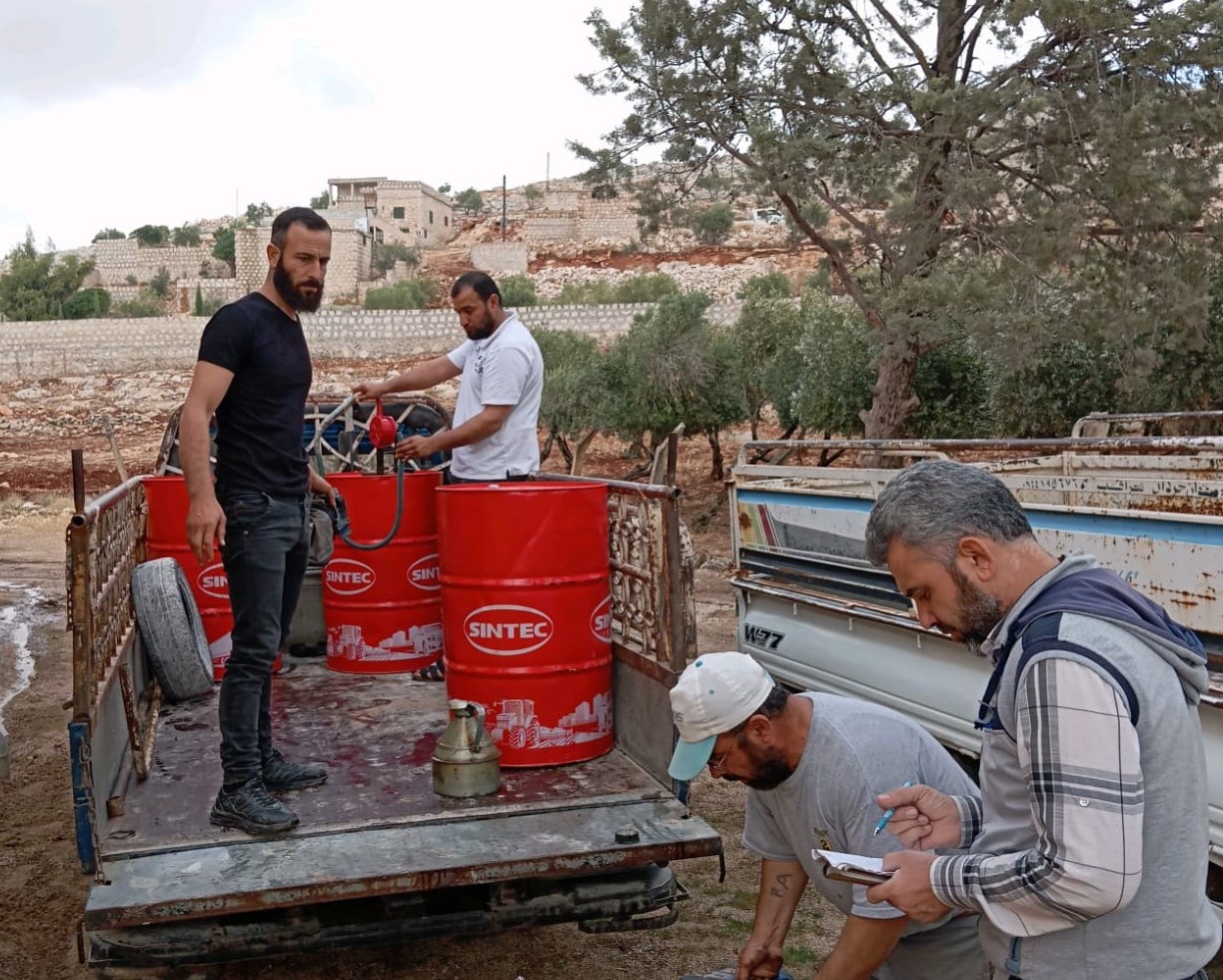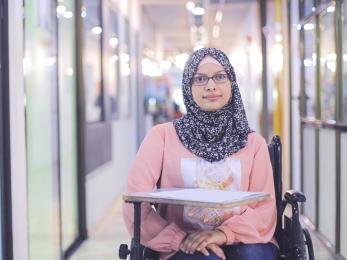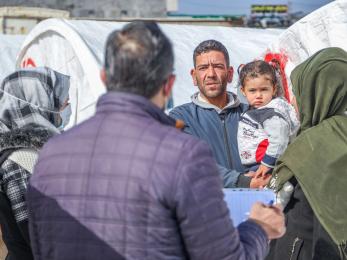Syrian dad determined to keep refugee kids learning
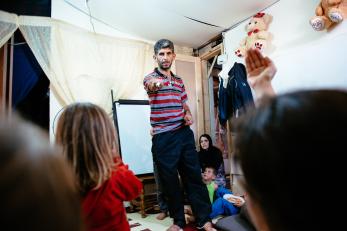
The heat is stifling between the plastic walls of the room where Ziad stands. A rotating fan provides little relief from the hot, dry air.
A half-circle of children is seated before him, each waiting cross-legged on the thin rugs that cover the concrete floor, with a blue notebook and a pencil placed neatly on their lap.
One plant, the fan, a couple of teddy bears and a whiteboard procured especially for these lessons decorate the small, modest room.
Paying no mind to the warmth, when Ziad asks a question, a cluster of small, eager hands shoot into the air. Class is in session today — and the children are hungry to participate.
There is just one thing: Ziad isn’t a teacher. This isn’t even a school.
This class is taking place in the main room of Ziad’s tent in an informal settlement in eastern Lebanon, where a couple hundred Syrian refugee families are trying to eke out a living in a setting ripe with hunger, poverty and discrimination.
As refugees, Ziad’s kids don’t have access to formal schooling. And, of all the challenges Ziad’s family is facing, this is the one he is most dogged to overcome.
“I just want one thing in this world,” he says, looking at his 7-year-old son, Simon, “only one thing. I don’t want anything else. That you and your siblings go to school and graduate and have a better life.”
Refugees face steep challenges in Lebanon
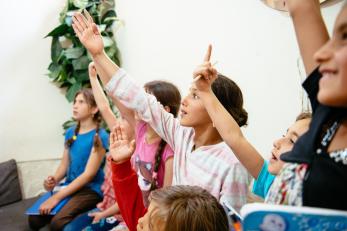
Over a million Syrians have flooded Lebanon since the start of the crisis in Syria, taking shelter in cities, neglected buildings and informal settlements, wherever they can find cover of some sort to protect them.
The settlement where Ziad lives lies at the end of a long, dusty, dirt road in eastern Lebanon’s Bekaa Valley, the country’s agricultural epicenter.
Here, surrounded by farmland, hundreds of Syrian refugees fleeing war have occupied a compound of small, abandoned cinder block buildings. A tangle of makeshift tents like Ziad’s — concrete pads with tarps and blankets for walls — fill the spaces in between, housing the overflow of families seeking refuge.
Mercy Corps provides water and sanitation support, and is helping make rudimentary shelters safer and more livable. But, still, life here is difficult: hunger, unemployment and stress are constants for nearly everyone.
Only around half of primary school-age Syrian children in Lebanon are enrolled in formal education. And, in the Bekaa Valley, attendance is even lower: 36 percent.
Despite the government’s efforts to include Syrian youth in the public education system, obstacles like transportation fees, safety concerns, language barriers and discrimination keep many children from enrolling.
Living in poverty, and without access to school or other safe spaces to grow and develop, countless young refugees are fated to sit idle in their shelters or work to support their families.
Too often, there simply isn’t anything else for them to do.
Why education is critical for refugee children
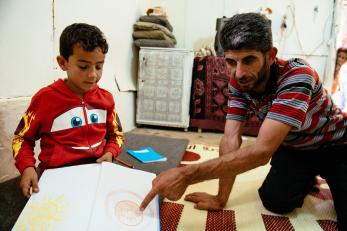
But as his settlement’s “shaweesh”, (its informal leader,) Ziad feels a great responsibility to care for the men, women and children living here. It’s the Syrian way, he says.
And so, when the public school his bright and curious son Simon was attending in Lebanon ran out of space for him last year, Ziad didn’t waver. He decided to teach lessons himself.
And not just for his son, but for all the children in his settlement who were missing out on their education.
“The first thing I taught them was the alphabet, how to read, and how to write,” Ziad says. “Something very, very important so their generation is not completely lost.”
“I also teach them the seasons, all the basic things. And I try my best to revive their memories of what they have learned in Syria, so they don’t forget.”
In an environment without structure and opportunity, the school sessions Ziad hosts in his tent provide a small amount of hope and security.
Only half of young refugees attend primary school around the world. Only 25 percent are enrolled in secondary school. And a dismal 1 percent have access to education beyond that.
But, according to the United Nations High Commissioner for Refugees (UNHCR), education during displacement is vital. It can promote social cohesion, support emotional healing, offer safety and prepare young people to rebuild their communities and pursue productive lives.
It can also foster peace: The Global Partnership for Education states the risk of a young person engaging in violent conflict is reduced by 20 percent for every year of education attained.
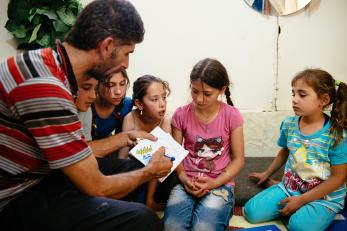
“If they live in this depression, this darkness, this will reflect when they’re adults,” he says. “Right now, we are in a state of war. They might hear things, they might see things that would affect them negatively. They might become violent when they grow up.”
“So in giving them this hope, in telling them that life has its ups and downs … it’s going to give them an effort so they can do something in their future.”
Breeding hope, one lesson at a time
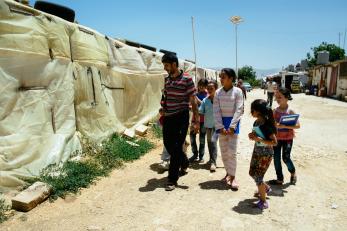
Since starting his school, Ziad can’t walk through the slapdash streets of the settlement without collecting a pack of kids, blue notebooks in hand and ready to learn, on his way.
He has somehow managed to secure markers, pens and other basic supplies, and hosts class twice a week from the main room of his tent.
Traditional lessons range from Arabic and arithmetic, to the seasons, the nutritional value of oranges and the difference between a river and the sea.
“I don’t really have a curriculum, but I try my best to keep them learning, to keep teaching them something, so they are always learning something,” Ziad says.
For his students, he has become an anchor in an otherwise volatile existence, and the close attention he gives to them is just as valuable as the academic lessons he offers.
By encouraging the children to draw, Ziad is able to find out what they’re thinking about and how they’re feeling, making it a point to engage those who are reliving traumatic memories.
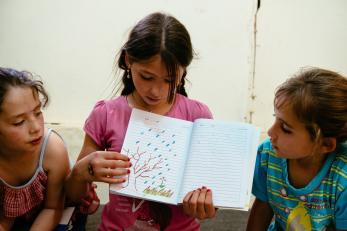
If today is a bad day, he tells the kids, tomorrow will be better. Some days you will be happy, like when you go to a wedding, and some days you will be sad, like when you go to a funeral. You just have to trust that you will be OK in the end.
“The importance is not just teaching subjects, but teaching hope,” he says. “If you don’t give children hope, it’s the same as losing a whole generation, because this is all they have. The future is all they have.”
How we help send refugee kids to class
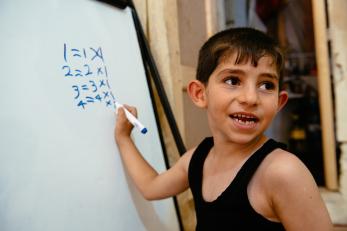
Mercy Corps strives to ensure young refugees don’t lose their futures to conflict. We build temporary learning spaces and distribute school supplies for kids who have been displaced from their schools and communities.
We work to ensure the most vulnerable children, like those with disabilities, have transportation and resources to continue their education.
And our youth centres and child-friendly spaces give children living in displacement camps and host communities safe places to heal, learn and develop new skills. Learn more: A brighter future starts with an education ▸
